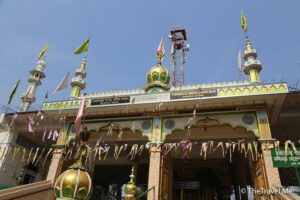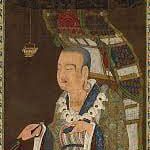The Role of Sufism in Cultural Integration in North-East India
The Role of Sufism in Cultural Integration in North-East India
The Role of Sufism in Cultural Integration in North-East India
The Role of Sufism in Cultural Integration
Sufi or Sufism in Islam refers to a person or way of life or ‘ism’ that is based on true Islamic sentiments. A Sufi in Islam bears the following characteristics or qualities-
First, a Sufi in Islam is a person who philosophizes and mysticizes Islamic principles and thinks that all beings are creations and manifestations of only one God.
Second, he is more inclined towards spiritual devotion than worldly matters.
Third, he often breaks away from his family ties to become an ascetic and his life itself becomes an institution of spiritual guidance.
Fourth, his abode becomes a pilgrimage for spiritual upliftment.
Fifth, he leads a simple and pious life and attracts people’s attention not just by sermons but by his lofty personality and love for all irrespective of caste and creed.
Sixth, he thinks that the salvation of the human soul is the highest goal of human life and is possible through self-purification and meditation on God.
Seventh, he moderates Islam to some extent for the sake of racial harmony, while maintaining the core spirit of Islam.
Sufism in Islam as an independent ‘ism’ originated after the demise of Hazrat Muhammad (SM), especially during the Umayyad dynasty which changed the republican character of government to a monarchy. They adopted many unIslamic principles and diluted the real spirit of Islam. At this, disgusted with the corruption and despotism of the Umayyad rulers, many devout Muslims began to oppose their activities and seek a path of self-purification. They sought to attain salvation through devotional practices, meditation and retirement from society. The third century after Hijri appears to be the early period of Islamic Sufism.
Although Islam entered India during the Prophet’s lifetime through Arab traders, Sufism came to India as early as the eleventh century. But in Assam, Sufism made its mark at the beginning of the thirteenth century. Records show that the first Sufi to come to Assam was Shaikh Jalal Uddin Tabrizi and hence the line of Sufis is still running its operations over a vast area of Northeast India. Among the Sufi saints of Assam, after Shaikh Jalal uddin Tabrizi, mention may be made of Hazrat Shah Badar, Shah Sikandar, Pir Shah Madar, Pagal Pir, Ghiyas uddin Awliya, Hazrat Azaan Fakir, Hazrat Amjad Ali, Shah Akbar, Shah Sufi, Shah Kamal and many more. Sufis in Assam are called by many titles like Pir, Baba, Awaliya, Khaja, Fakir, Shadu, Pagla etc. and the place where they live is called Dargah or Khanqah (temple).
Let us present a brief description of some of these Sufis as under:
The first of the Sufis who found their way to Assam is called Hazrat Jalal uddin Tabrizi. Where he came from is not known. But it is known that he came to Assam during the third decade of the thirteenth century with the invading army of Hussamuddin Iwaz in 1226 AD. He happened to make his residence at Garigaon, about ten kilometers west of Guwahati. He still has a mosque and a mausoleum (mazar) at Garigaon. He breathed his last there in 1244 AD. The Dargah established by him is called Garigaon Dargah.
The second influential and famous Sufi was Ghiyas uddin Awaliya. He came to Assam in 1321 AD with the invading army of Sultan Ghiyas Uddin. He made his residence in Hajo. His dargah is called Powa Mecca Dargah.
Thirdly, mention may be made of Badi Uddin Shah Madar, who is said to have come from Medina during the thirteenth century. But where he established his dargah is not known for sure.
Another famous and influential Sufi saint of Assam who came from abroad is Syed Shah Milan popularly called Azaan Fakir. He came from somewhere in a western country with the Mughal invading army in the early seventeenth century. His contribution to Assamese culture and racial integration is immense. He probably died around 1696.
Another Sufi saint who migrated from Baghdad, Iraq in 1906 was Hazrat Shah Nasiruddin Baghdadi. He established his Khanqah at Jaleshwar, Goalpara, where he lived till his death in 1936.
The contributions of the above mentioned Sufi Saints to the cultural integration of the vast region of North-East India are enormous, which can be counted under three heads— (a) influence on educational, linguistic and literary integration, (b) influence on religious integration, (c) Effects on socio-cultural and artistic assimilation. Let us discuss these effects below:
Educational Linguistic and Literary Integration
The influence of Sufi saints in the field of education, language and literature are very prominent and outstanding. They introduced a new force in the then-chaotic literary field of Assam. From the very beginning, the centers (temples) of Sufi saints have been playing an important role in the educational development of the people. Many Sufi saints established ‘Maktabs’ and ‘Madrasas’ (schools) near their Khanqahs. Mention may be made of the Mazharul Uloom Madrasa established by Hazrat Naseeruddin Baghdadi at Katrihara, Goalpara.
Rudra Singh among the Ahom kings was a great patron of art and literature. During his reign some popular literary works mainly romances of profane and secular nature entered Assam through Muslim saint-poet Shaikh Manjhan whom the king used to recite some romantic literature like- Shah-Pari Mrigawati Charita which was composed in Assamese under the influence of the Hindi poet Qutuban.
Like poetry, some popular ballads in Assamese flourished under the influence of the Sufi saints. For example, the Mani Kuwarar song, Abdul Ghaffar’s Chikan Shariyar Git that narrate the story of how a Muslim maiden was loved by one of the Ahom kings. Among other ballads of Islamic character, there are Sat Nawabar Git, Baramahi Git etc.
The most excellent and admirable literary works of Sufi saints cum poets are Zikir and Jaris. Ajan Fakir (Shah Milan) was foremost among them. The Zikir and Zari are works of high literary quality with full Islamic spirit. These are devotional in nature. The following lines may be quoted at random,
”Hindu Musalman Ek Allahhar Farman
Hinduk Puriba Muminak Gariba.”.
(Hindus and Muslims are bound by the same set of divine laws of Allah. The act of crematting a Hindu and burying a Muslim signifies one end which is death.)
In another Jari, we read
”Mor manat aan Bhaab Nai O Allah
More Manat Aan Bhaab Nai
Hindu Muslim Ek Allah Farman
Akherat Ek Allahr Naam.”
(In my mind, O Allah I have no separate thoughts. Hindus and Muslims are under one law. The final word of all services is Allah.)
In another Jari we find,
Dhan Jan Putra Bharya Sabe okaran
Chhaya Muthe Beri ache mayar karan.
(The wealth, friends, wives and children are all futile. They are only shadows that surround you on account of illusion.)
Besides the assimilation of Islamic tenets and spirits with Assamese literature, many Persian and Urdu words and phrases have got entered into the vocabulary of Assamese literature through the Sufis of Assam. Mention may be made of sarkar, muakkil, faujadar, hakikat, ferista, haram, manjil, matabbar, paida, nabab, darbar, dil, dushman, tamam, kiyyamat, khejmat, khana, khata, jahan, ukil, ujir etc.
The Sufi saints of Assam contributed greatly to the development of both the substance and spirit of the Assamese language and literature, which has exerted considerable influence on the formation of cultural integration among the different castes in North-East India.
Impact on Religious Integration
Sufi saints have rendered commendable service in the field of religious unity in North East India. The Sufi saints themselves imbibed the words of the Prophet to ‘spread to others what you have heard from me.’ The Sufis took this message of Muhammad (pbuh) to heart and dedicated their lives to the propagation of Islam and its sacred messages to mankind. Thus from the very beginning, it seemed that the Sufi centers (khanqahs) actually became centers of missionary activity. Many Sufi saints entered Assam with the invading Muslim troops. But a large section of Sufi saints had entered Assam when the central government of Kamrup disappeared and the people of Assam became easy prey to oppression and exploitation and feelings of uncertainty, despair and terror prevailed in their minds. They sought solace in religion. Sufi saints took an active and eager part as reformers and spiritual guides to save the people from such wretched conditions and to infuse new hopes among them. The Sufi saints were successful in converting people from different tribes and communities to Islam on a large scale. They performed the following roles as high missionaries –
First, the saints liberalized and modified the tenets of Islam to make them easily practical by the common people.
Secondly, the Sufi saints tried to remove the high and low discrimination prevailing in society and opened the door for the backward and untouchable communities to enter Islam.
Along with liberating people from social discrimination, Sufi saints bound them with the feeling of fraternity and friendship. Mosques, Dargahs and Mazars are the main Muslim religious institutions that have been playing an important role in the social and cultural life of the Assamese people.
Through songs, bhajans and zikir-zaris, the Sufi saints tried their best to show that in the eyes of Allah there is no discrimination of high and low, caste and creed. All are the creation of the same God. Sufi Saint Sultan Baba composed:
Main Mussalmano nahoi, Hinduo nahoi
Mullao nahoi, kajio nahoi
Mor manat mrityu bhoi nai.
(I am neither a Mussalman nor a Hindu, nor even a mullah or a kaji. I also fear not to die.)
It is observed that Sankardeva was also influenced by the principles of Islam as the principles of Vaishnavism of Sankardeva are actually Assamese Kalima Taiba’s translations. Shankardev says
Ek deva, ek seva ek bine nai keha.
(There is only one God who alone is worthy to be worshipped, except Him there is none.)
In real-life situations, we see that there are many joint Hindu and Muslim villages in Assam where the two communities live together. They are living together in the same village with different prayer houses in the form of Namghar, Mandir, Dargah and Masjid. Communal relations are so cordial in some villages that Muslim villagers often visit their Hindu brothers in namghars and partake of the same offerings with the Hindu brothers. Similarly, Hindu villagers are also seen visiting the shrines of Pirs, Khanqahs and Dargahs.
Thus the main principles of Vaishnavism and Islamic Sufism were integrated and not only helped in developing a deep sense of mutual respect and tolerance among the people but also enriched each other’s religious rituals. Thus, like Sufism, many rituals are found in Vaishnavism which has been in Islam. Perhaps being imbibed with the influences, Vaishnavism laid stress on honest earning and plain living. It also emphasized the external chastity of men. After sleeping, eating, and having sexual intercourse, a person becomes impure and should take a bath. A Vaishnava should not be addicted to drugs and should keep honest company. It also advises women not to mix freely with other men and that they should cover their bodies from head to toe with a cloth so that no one could see any part of their bodies. Yet the teaching of socio-economic factors in Vaishnavism is believed to have been imported from Islamic teachings, which became possible only as a result of harmonious relations between the two pious groups. The effect of this harmonious relationship between Sufism and Vaishnavism pervaded the field of fine arts and became a veritable culture of the people. Such good relations between Hindus and Muslims of Assam greatly helped in the germination of a deeply secular outlook in Assamese social life from the beginning till today. If there is a riot, it happens because of dirty politics and not because of religious, social and cultural identity. This secular social trend becomes stronger and stronger as the long corridor of centuries passes. Even in the busy days of Hindu-Muslim riots in different parts of India, Hindus and Muslims of Assam gather in Namghar or Masjid or Dargah courtyard to express their disapproval of any enmity between people of the same land. Rather in the present times, such a non-communal feeling is gradually being developed in Assam whose slogan is –
”Ajan Shankarar deshat
Hatya santrash banda karak.”
(In the land of Ajan and Sankar stop killing and terror.)
Impact on Socio-cultural and Artistic Assimilation
With the influences of Sufistic activities as well as Islamic civilization, a new dimension was ushered in the field of socio-cultural assimilation in almost every field of life because the Sufis, obviously the Sufi saints did not bring only the religious teachings but they came with the very zeal of already established civilization, which has flourished in Arabia and central Asia. The Sufi taught the principle of patriotism as part of faith and inspired them to accept Assam as their homeland.
It is recorded that the Ahom royal officials employed a considerable number of Muslims as weavers, drapers, tailors, masons and even in the armory. The royal officials, being satisfied with their Muslim employees in various fields, showed their passion for increasing the Perso-Arabic elements in the Assamese culture. There is no doubt that the use of enamel gold ornaments, dome-shaped masonry work, use of metal spittoons, smoking pipes, hookah etc. are the result of cultural assimilation with the Muslims.
The Matrimonial ties also contributed greatly to the creation of cultural integration in the northeast region of India. It is known that Shah Milan (Ajan Fakir) married an Assamese girl from Sibsagar, by whom he had three sons.
Similarly, the Sufi saints had established an environment that not only contributed to the development of socio-cultural elements but also created a living cultural style that has become an integral part of the present cultural spirit of the Assamese people. 0 0 0.
The Role of Sufism in Cultural Integration,
The Role of Sufism in Cultural Integration
N. B. This article ‘The Role of Sufism in Cultural Integration in North-East India’ originally belongs to the book entitled ‘Gleaned Essays‘ by Menonimus.
The Role of Sufism in Cultural Integration,
The Role of Sufism in Cultural Integration
Books of Composition by M. Menonimus:
- Advertisement Writing
- Amplification Writing
- Note Making
- Paragraph Writing
- Notice Writing
- Passage Comprehension
- The Art of Poster Writing
- The Art of Letter Writing
- Report Writing
- Story Writing
- Substance Writing
- School Essays Part-I
- School Essays Part-II
- School English Grammar Part-I
- School English Grammar Part-II..
Books of S. Story by M. Menonimus:
Related Search:
- Sufis and Their Contributions
- Introduction to Suf Literature North-East India











